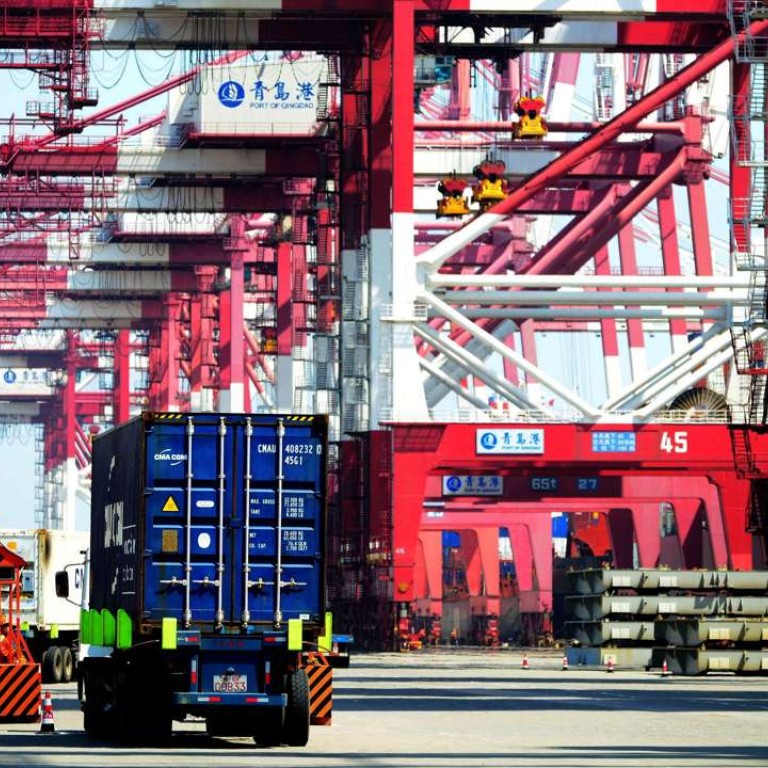
Is the worst over for China’s economy and currency?
A year ago when the Chinese delegation was attending the spring meeting of the International Monetary Fund in Washington, China was still largely seen as a risk factor for the world economy with a gloomy outlook and mounting concerns over capital flight.
The tide has turned a year later, especially after China reported a better-than-expected 6.9 per cent growth rate for the first quarter and managed to stop a depletion in its foreign exchange reserves. At least on the surface, the country has avoided a hard landing in economic growth, defused any form of financial or debt crisis, sorted out trade rifts with Donald Trump and put itself back as a key player contributing to world economic growth.
The IMF on Tuesday raised its China’s growth forecast for this year to 6.6 per cent for this year and 6.2 per cent for 2018, allowing the Chinese delegation to sit more easily at the spring meeting of the World Bank and IMF, which starts on Friday.
A resilient Chinese economy, along with rising commodity prices and sturdy financial markets are offering a sunnier outlook for the global economy and helping dispel the gloom that has lingered since the global financial crisis, IMF said.
“The upward revision reflects the stronger-than-expected momentum in 2016 and the anticipation of continued policy support in the form of strong credit growth and reliance on public investment to achieve growth targets,” the IMF said.
Leaving fears of a hard landing and sharp depreciation of its currency behind, China is again pushing its strategic agenda.
According to the published schedule of the gathering of world central banks and financial policymakers, Yi Gang, a deputy governor at the People’s Bank of China, will attend a panel discussion on the Special Drawing Rights’ role in the international monetary system.
Beijing has been taking the Special Drawing Rights, the accounting unit of the IMF, seriously as a springboard to extend the global use of the yuan. But it was forced to put the internationalisation of China’s currency on the back-burner since the middle of 2015 while defending the yuan exchange rate against the dollar, as preventing the flow of capital out of the country became the priority.
Things started to change over the past couple of weeks.
Banking sources told the South China Morning Post the central bank has started to relax controls on yuan outflows, a step showing Beijing’s recovered confidence in its currency value and capita flows.
A week earlier, almost at the same time as US President Donald Trump said China would not be labelled as a currency manipulator, a senior Chinese central bank official published an article saying China should redouble its efforts to strengthen the role of the yuan as a reserve currency.
Chinese Premier Li Keqiang also said in comments published on Tuesday that market confidence in the yuan has significantly improved after China’s exports surged in March to generate US$24 billion of trade surplus in a single month.
At the same time, while the stabilisation of the world’s second biggest economy and its currency offers some certainty to counter the risks from Britain’s divorce from the European Union and populist sentiment in European elections, there remain concerns that China may just be sweeping its economic problems under the carpet rather than truly solving them.
The IMF has warned that Beijing’s reliance on stimulus measures and rapidly expanding credit is “intermediated through an increasingly opaque and complex financial system”.
China’s aggregate financing, a broad measure of credit, rose to new high of 17.8 trillion yuan (US$2.58 trillion) last year, a large proportion of which went to the frenzied property market, government-backed infrastructure projects and state-owned “zombie” enterprises.
Shadow banking activity made a surprise return in the first quarter, against Beijing’s efforts to reduce debt and financial risks.
“China did not overcome tighter first-quarter credit to achieve its growth result, but rather capitalised on the loosest conditions since 2013,” according to the latest China Beige Book complied by a New York-based research group.
Wu Jinglian, an economist and advocate of economic reforms in China since the 1980s, said in a speech on Sunday that China was still relying on an investment-led growth model while making little progress on much-needed structural reforms.
“The side-effect [of stimulus measures] is particularly severe with leverage already surpassing a breaking point. The possibility of systematic risk outbreak has stood out from last year,” Wu said.

